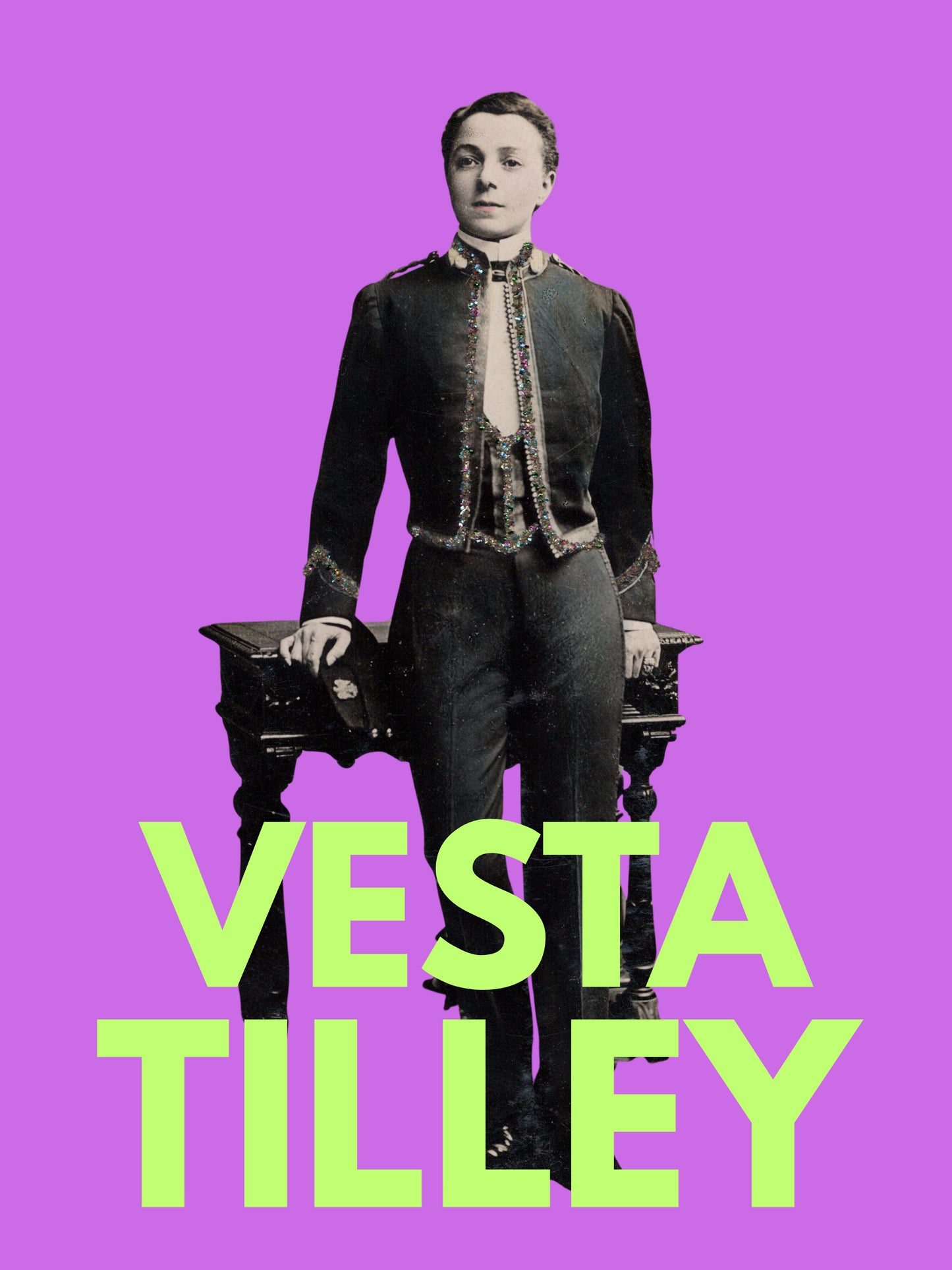Vesta Tilley
Vesta Tilley
Couldn't load pickup availability
Printed on high quality 230gsm matt archival paper.
Image restored from original postcard published by Rapid Photo Co. There is no postmark on the postcard but it is considered to be pre-1926. Brown, Barnes & Bell are credited in the lower corner of the original photograph. They were a prominent Victorian photography firm active from around 1879 to the early 1910's. The company was based in Liverpool but had studios across the UK. They photographed many prominent figures of the time including Queen Victoria. Vesta Tilley was the subject of several portraits which were made into bromide postcard prints in the early 1900's.
Vesta Tilley (born Matilda Alice Powles in Worcester, 1864) was one of the most celebrated music hall performers of the late Victorian and Edwardian eras. She gained fame as a male impersonator, performing comic and satirical songs dressed as various male characters—soldiers, judges, policemen, and dandies. Her career began astonishingly early; she first appeared on stage at age three and began impersonating boys by six. By the 1890s, she was England’s highest-paid female entertainer, and her popularity extended to the United States as well.
During World War I, she became known as “England’s greatest recruiting sergeant”, performing in khaki and encouraging men to enlist through patriotic songs. She retired in 1920 after a farewell tour, donating the proceeds to children’s hospitals.
Vesta Tilley and the Sunderland Empire
Her connection to Sunderland is particularly significant. Vesta Tilley laid the foundation stone of the Sunderland Empire Theatre on 29 September 1906, a symbolic gesture that underscored her status as a leading figure in British theatre. She then headlined the opening night on 1 July 1907, where her performance was met with “tremendous enthusiasm”.
The Sunderland Empire, originally called the Empire Palace, was designed by local architects William and T.R. Milburn and built under the vision of theatre impresario Richard Thornton. It remains one of the finest examples of Edwardian theatre architecture in the UK.
Although a statue atop the theatre’s dome is often mistakenly thought to represent Vesta Tilley, it actually depicts Terpsichore, the Greek muse of dance. The original statue was removed during WWII for safety and now resides inside the theatre.
Share


